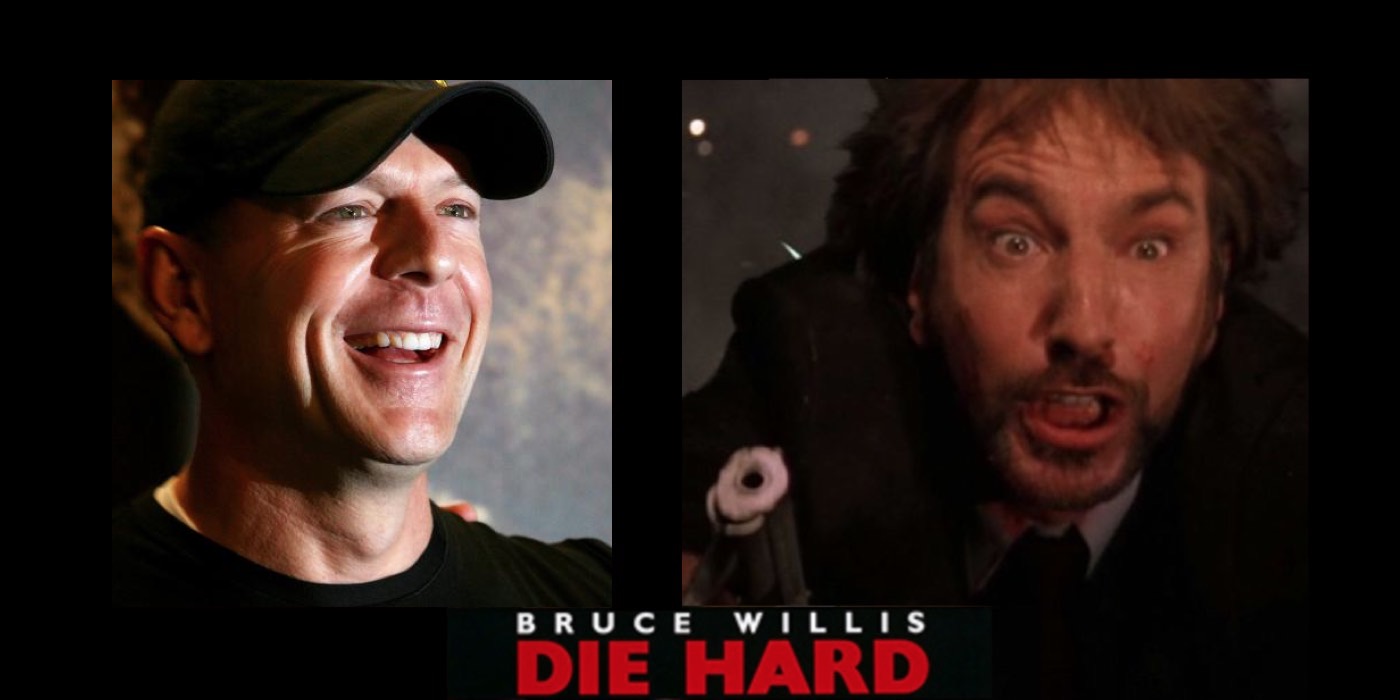30 years ago today, a cobbled-together action film called Die Hard was released into select US theaters. Costing $28 million, it ended up grossing over $140 million that summer, and turned Bruce Willis—a comedic TV actor—into a blockbuster superstar.
Its success sparked a franchise of four sequels, video games, and a comic book—it also spawned a string of movies that involve a random citizen turns into a hero against overwhelming odds.
Considered a Christmas picture, Die Hard portrays off-duty NYC cop John McClane (Willis) trying to rescue his wife in a skyscraper where her office holiday party is being terrorized by gunmen. The lead villain, Hans Gruber, was played by Alan Rickman in his very first film role ever.
You might know all this already, but chances are you don’t know these interesting trivia tidbits… SPOILER Alert: Some of these facts will give away certain details of the film.
1) The script is based on Roderick Thorp’s 1979 novel Nothing Lasts Forever, the sequel to The Detective, which was adapted for a film starring Frank Sinatra. The studio, 20th Century Fox, was contractually obligated to offer Sinatra the lead role in Die Hard, but he turned it down.
2) Arnold Schwarzenegger declined to shoot the film as a sequel to Commando, so the script was offered to a variety of action stars, including Sylvester Stallone, Harrison Ford, Don Johnson, Clint Eastwood, Richard Gere, and Burt Reynolds—all of whom turned it down.
3) Fox reluctantly gave the role to Willis, who was known as a comedic television actor. Plus, they paid him $5 million, a figure virtually unheard of at the time for an actor who had starred in only one moderately successful film. (Some speculate it was done to make Willis seem desirable to the public.)
4) The plot’s ending had not been finalized by the time filming commenced, which resulted in a truck (used for transporting the terrorists to the building) appearing too small to contain the ambulance that was later revealed to be inside it.
RELATED: Alan Rickman’s Final Roles Include Lifesaving Video of Tortoise Eating a Strawberry
5) In the original script, the events took place over three days, but director John McTiernan decided they should take place all in a single night, inspired by Shakespeare’s A Midsummer Night’s Dream.
6) The building’s 30th floor (filmed in the actual Fox building that was under construction), where the hostages are held, was a recreation of the Frank Lloyd Wright-designed house Fallingwater, including a large rock with water dripping from it.
7) The scene of McClane falling down a ventilation shaft and catching onto a lower opening was the result of an accident after Willis’ stunt man fell. Editor Frank Urioste chose to use the unintentional scene in the final film.
MORE: Alone on Saturday Night? Watch One of These 14 Great Romantic Comedies
8) During Alan Rickman’s death scene, he was dropped on a green screen set, with cityscape to be added later. The shot used was the first take; Rickman was dropped sooner than he had been told he would be, so the startled look on his face is genuine.
9) The DVD commentary revealed that the script did not originally include the scene where McClane runs into Gruber who pretends to be a hostage; it was later added when it was discovered that the British Rickman could do an amazing American accent. (See the scene below)
10) Beethoven’s 9th Symphony (more commonly known as “Ode to Joy“) was featured prominently in the film score, as well as variations on “Singin‘ in the Rain”. McTiernan said he used them in the soundtrack as an homage to Stanley Kubrick’s A Clockwork Orange (which featured both pieces of music).
11) The film’s final four minutes were tracked with music from two other Fox features and meant to be temporary—but they made the final cut: in the reunion scene with McClane and wife, from the film Man on Fire, and the rifle scene from the score of Aliens.
12) Bruce Willis donated the undershirt worn in the film to the National Museum of American History at the Smithsonian Institution in 2017.
13) The film was selected for preservation in the U.S. National Film Registry last year by the Library of Congress as being “culturally, historically, or aesthetically significant”.
(WATCH the original 2-min trailer to hear all the iconic lines…)
Yippie-Ki-Yay! Share the Die Hard Birthday Trivia…




















